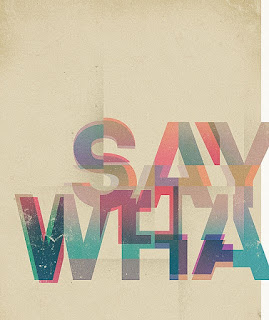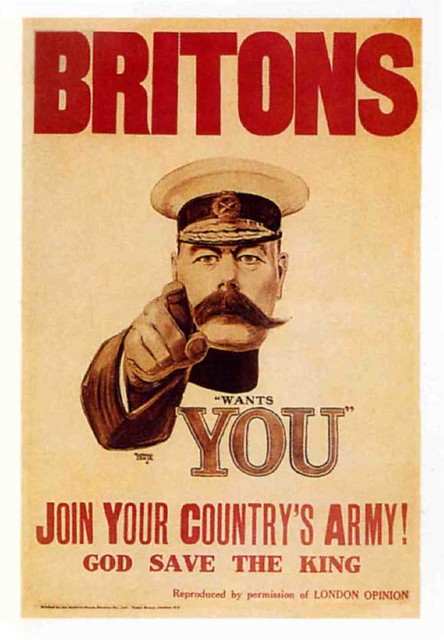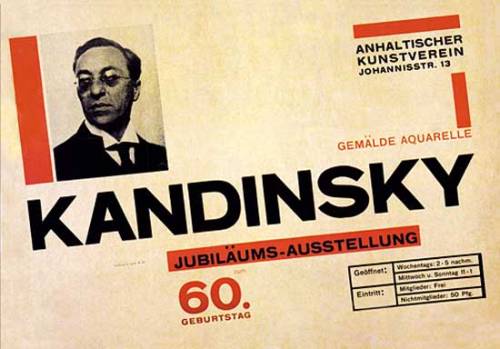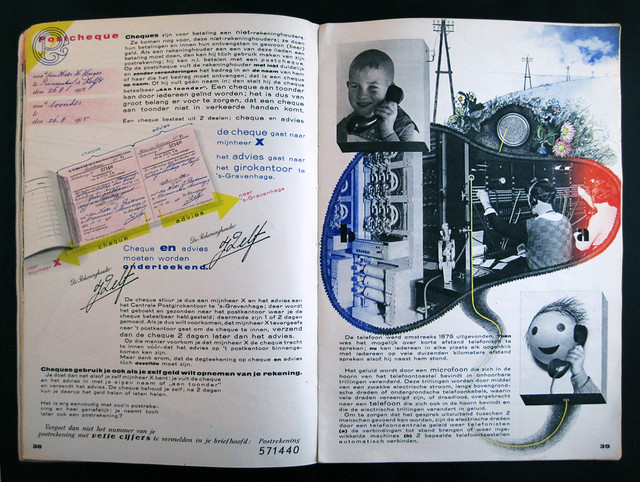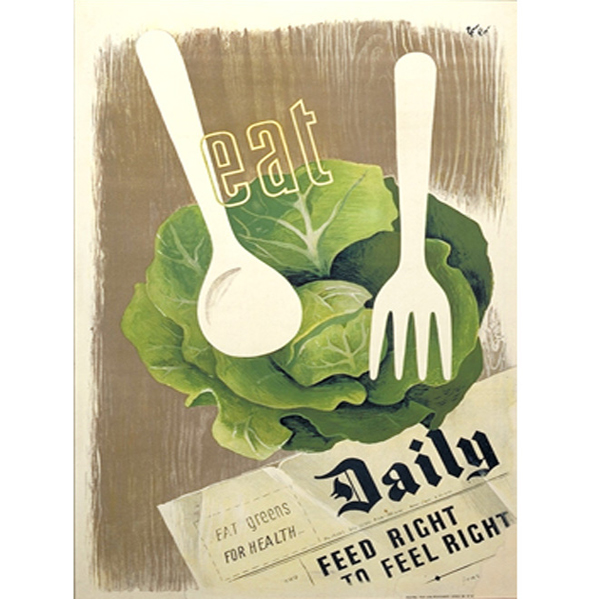We then had to sort out the other groups pile of examples into a like and dislike pile.
We discovered that, quickly and subconsciously, we all used the same list for judging/ sorting work. Something along the lines of this:
- Quality/ skills/ execution of design
- Layout (concerning type)
- Composition (overall)
- Colours used
- How effectively the design communicates
- If the context is clear/ unclear
- Concept
- Legibility
- Function
- Suitability for audience
- Content (non visual)
- Content (visual)
- Media and method of production
This list is essentially our usual criteria for analysing/ sorting work.
Is there a problem with us all using the same criteria? Does that mean that we cannot give constructive criticism on each others work, since we are all using the same judging techniques?
When the sorted piles of likes and dislikes were turned over we discovered that although we all have different taste, some of the groups sorting opinions were correct, and so exactly the same!
D.I.E.T. - an alternative criteria
D - describe (what can you see?)
I - interpret (what is it about?)
E - evaluate (how good is it?)
T - theorise (how could it be improved?)
We then got into partners and chose a piece of work to analyse each. We started by writing the description and our interpretation of our chosen piece.
Here is what i wrote for my image, 'Rolling Along'
D - A logo including a cartoon/ microsoft clipart of a man on a unicycle incorporated into wordart text. There is an unusual, unrealistic drop shadow on the text only. A bright, fluorescent blue and green colour scheme. Arial font, blurry, pixelated aesthetics and old fashioned imagery.
I - I do not know what the company is/does from this logo- it is not entirely clear but the unicycle and the dashed lines behind it, accompanied with the wavy text suggest movement. The name of the company also suggests this. But this company could be anything from bike rental, to careers advice (rolling along.... progress....).
And what i wrote for Ellen's image, straightsmiles
D- blue and white colour scheme, stretched/ distorted text all in Comic Sans font in lip shape with gradient. not sure if logo or business card design.
I - From the text alone i know that it is representing an orthodontics centre, but if i could not read the text i would be able to know this because of the cold colour scheme (ie, mint toothpaste etc) and the lip shape in the background. Also, the way that the text is curved along the bottom of the lip is suggestive of a jawline.
We then swapped images and wrote the description and interpretation of that one too. We ensured that one could not see what the other was writing, so that we could compare what we had written - was a vaguer criteria the answer to independent answers?
There were more similarities than differences in our answers!
We both identified the colour scheme in our description of Rolling Along and commented on the distortion/ manipulation of the text. We described the quality of the images more than the images themselves.
And for Straight Smiles, we could identify the company's purpose from their logo through the colour scheme and text. We both also had to comment on the font used!
We then, as a pair wrote the evaluation and the theory for the two images:
Rolling Along
E - Rolling along poorly communicates its message. The image is outdated in style and of bad quality, ie blurriness and execution. The colour scheme is too bright, and also gives it an overall outdated feel. Old fashioned techniques have been used to create this and it is shown!
T - Redesign the whole logo! a different platform should be used to create the logo for starters such as Adobe Illustrator or Photoshop , not Microsoft clipart! A plainer, more contemporary typeface, even something like helvetica would be more effective. A different way incorporating the image should be used. A short company description should also be included, so that it is clearer what the company is all about.
Straight Smiles
E - Poor execution, again, using inappropriate programs and platforms. The distortion of the text is inconsistent and looks imbalanced because of this. Lip image in background is not quite symmetrical when it appears that it should be. Font doesn't relate to subject matter, and isn't professional. Although, the colour scheme is fresh and fits well.
T - Different typeface is needed - again, something contemporary and clinical. The lip image is a nice idea, but needs to be redrawn symmetrically and perhaps opacity to be reduced so its not too overfacing. The lip image should also be centred in the page, and the text at the bottom should be made smaller and across one line.
What categories do our original criteria fall under in D.I.E.T. ?
D - Colour, type selection, manipulation of type, layout, quality of image, line & stroke, texture, composition, theme, content, concept, structure. OBJECTIVE
I - message, clarity, function, context, audience, tone of voice. SUBJECTIVE
E - general aesthetics, how effectively it communicates, quality of design, quality of execution, fulfilment of purpose, clarity. SUBJECTIVE
T - dependant on image/ design. SUBJECTIVE
In summary, we found that the outcome of assessment is not only down to personal opinion, but whether what we are assessing is objective or subjective. We all have similar ideas of what is good or bad design perhaps because we all aspire to the same profession, but there are times where we disagree because of personal taste.
STUDIO SESSION 1 - CRITICAL ANALYSIS
(to be continued)
Here is what i wrote for my image, 'Rolling Along'
D - A logo including a cartoon/ microsoft clipart of a man on a unicycle incorporated into wordart text. There is an unusual, unrealistic drop shadow on the text only. A bright, fluorescent blue and green colour scheme. Arial font, blurry, pixelated aesthetics and old fashioned imagery.
I - I do not know what the company is/does from this logo- it is not entirely clear but the unicycle and the dashed lines behind it, accompanied with the wavy text suggest movement. The name of the company also suggests this. But this company could be anything from bike rental, to careers advice (rolling along.... progress....).
And what i wrote for Ellen's image, straightsmiles
D- blue and white colour scheme, stretched/ distorted text all in Comic Sans font in lip shape with gradient. not sure if logo or business card design.
I - From the text alone i know that it is representing an orthodontics centre, but if i could not read the text i would be able to know this because of the cold colour scheme (ie, mint toothpaste etc) and the lip shape in the background. Also, the way that the text is curved along the bottom of the lip is suggestive of a jawline.
We then swapped images and wrote the description and interpretation of that one too. We ensured that one could not see what the other was writing, so that we could compare what we had written - was a vaguer criteria the answer to independent answers?
There were more similarities than differences in our answers!
We both identified the colour scheme in our description of Rolling Along and commented on the distortion/ manipulation of the text. We described the quality of the images more than the images themselves.
And for Straight Smiles, we could identify the company's purpose from their logo through the colour scheme and text. We both also had to comment on the font used!
We then, as a pair wrote the evaluation and the theory for the two images:
Rolling Along
E - Rolling along poorly communicates its message. The image is outdated in style and of bad quality, ie blurriness and execution. The colour scheme is too bright, and also gives it an overall outdated feel. Old fashioned techniques have been used to create this and it is shown!
T - Redesign the whole logo! a different platform should be used to create the logo for starters such as Adobe Illustrator or Photoshop , not Microsoft clipart! A plainer, more contemporary typeface, even something like helvetica would be more effective. A different way incorporating the image should be used. A short company description should also be included, so that it is clearer what the company is all about.
Straight Smiles
E - Poor execution, again, using inappropriate programs and platforms. The distortion of the text is inconsistent and looks imbalanced because of this. Lip image in background is not quite symmetrical when it appears that it should be. Font doesn't relate to subject matter, and isn't professional. Although, the colour scheme is fresh and fits well.
T - Different typeface is needed - again, something contemporary and clinical. The lip image is a nice idea, but needs to be redrawn symmetrically and perhaps opacity to be reduced so its not too overfacing. The lip image should also be centred in the page, and the text at the bottom should be made smaller and across one line.
What categories do our original criteria fall under in D.I.E.T. ?
D - Colour, type selection, manipulation of type, layout, quality of image, line & stroke, texture, composition, theme, content, concept, structure. OBJECTIVE
I - message, clarity, function, context, audience, tone of voice. SUBJECTIVE
E - general aesthetics, how effectively it communicates, quality of design, quality of execution, fulfilment of purpose, clarity. SUBJECTIVE
T - dependant on image/ design. SUBJECTIVE
In summary, we found that the outcome of assessment is not only down to personal opinion, but whether what we are assessing is objective or subjective. We all have similar ideas of what is good or bad design perhaps because we all aspire to the same profession, but there are times where we disagree because of personal taste.
"The critique is both a deadline and a marker of a perpetual beginning, a freeze frame moment in the context of a continuous studio practice.
This favours process over product, the means over the end..."
(to be continued)











